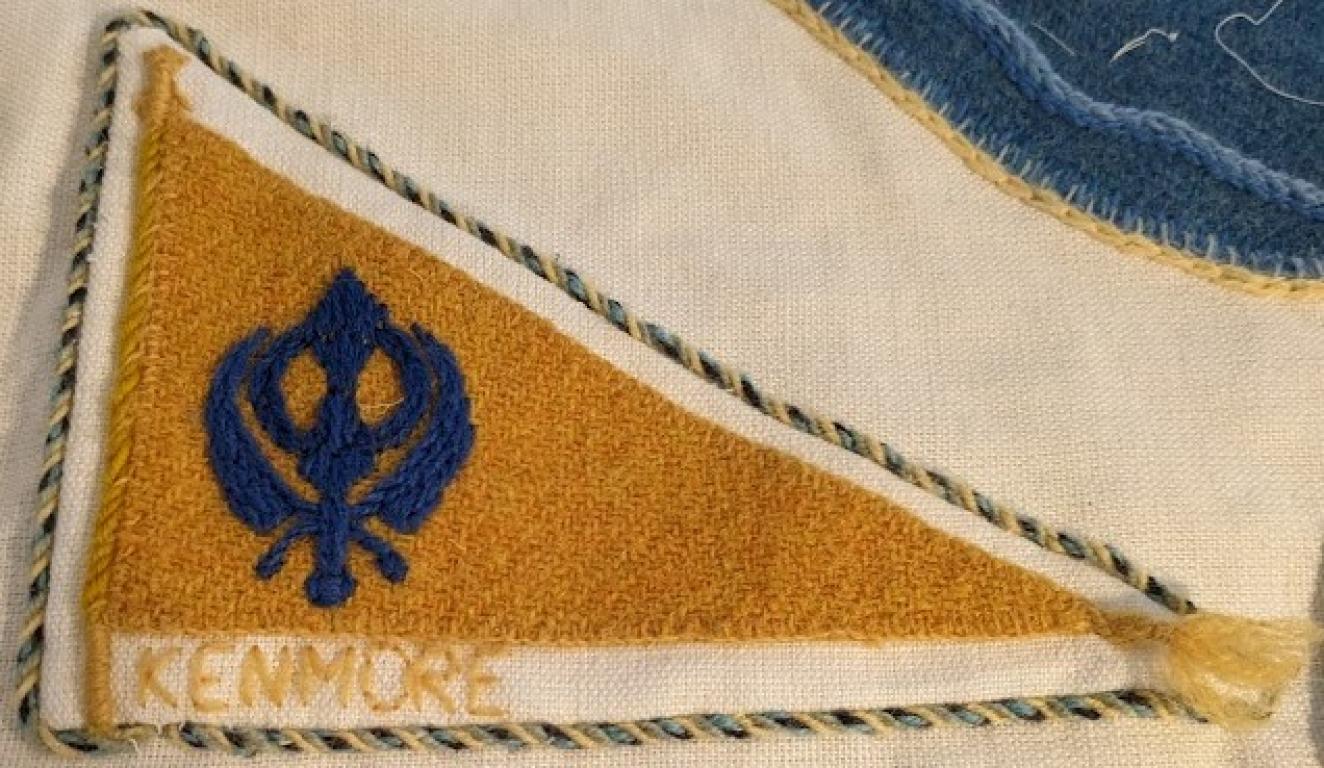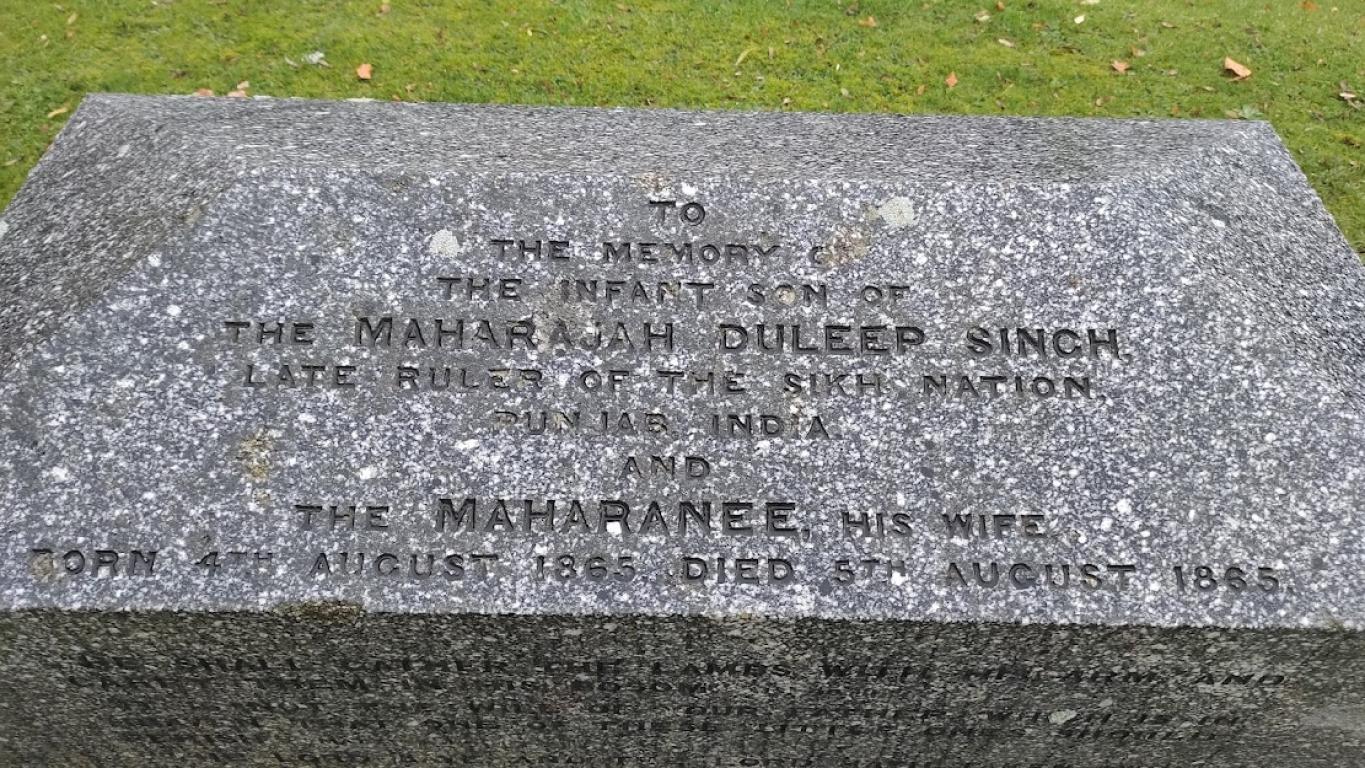
Heartlands - The Sikh Flag – The Nishan Sahib
BY THE HEARTLANDS STITCHERS
 The Nishan Sahib Flag Journey Stone
The Nishan Sahib Flag Journey StoneImage provided by The Heartlands Stitchers
 The grave of Sir Singh's first child, who died aged one day
The grave of Sir Singh's first child, who died aged one dayImage provided by The Heartlands Stitchers
TELLING THE STORY OF THE HEARTLANDS PANEL
The first child of Maharaja Duleep Singh, the last ruler of the Sikh Empire, was buried in Kenmore Churchyard in 1865. This infant son lived for only one day.
At the age of 5, Duleep had been proclaimed Maharaja of the Sikh Empire but following the conclusion of the second Anglo Sikh war and the annexation of his country in 1849 by the British East India Company, the Maharaja, still a boy, had been exiled to Britain. At the same time he was also forced to hand over the Kohinoor to the British. He then moved to Perthshire and lived at nearby Menzies Castle.
Duleep had converted to Christianity as part of the British policy that all aspects of his life should be anglicised. Later in life he regretted his decision and reverted to Sikhism. He married twice, having eight children in total but none of them survived to continue the direct royal Sikh line.
Many thanks to the Heartland Stitchers for sharing with us this incredible story behind their panel, created as part of the Tapestry of the Highlands and Islands.
READ MORE STORIES FROM THE TAPESTRY OF THE HIGHLANDS AND ISLANDS
Prior to the beginning of the stitching of each tapestry panel, each stitcher of the Tapestry of the Highlands and Islands was tasked with telling their interpretation of the 'Spirit of the Highlands and Islands' within a blank outline of a stone. The possibilities were truly endless - is it represented in the land? The people? A historical site? A favourite memory?
In any case, each journey stone represents the connection between each individual stitcher, their story, and their own sense, or 'spirit', of place. Discover more of the stories behind the journey stones of the Tapestry of the Highlands and Islands here.